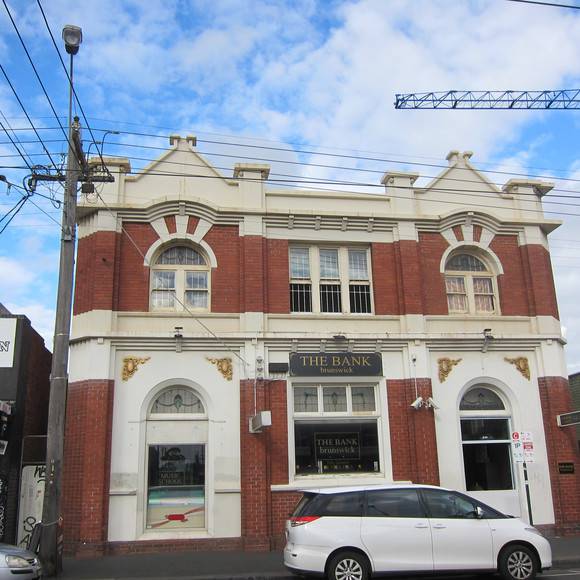| Back to search results » | Back to search page » |
|
STATE SAVINGS BANK OF VICTORIA (FORMER)
Other NameCommonwealth Bank Location840 SYDNEY ROAD,, BRUNSWICK VIC 3056 - Property No 19590 LevelRecommended for Heritage Overlay |
|
Statement of Significance
What is significant?
How is it significant?
Why is it significant?
The former Moreland branch of the State Savings Bank of Victoria
at 840 Sydney Road, Brunswick, designed by Godfrey and Spowers and
built in 1913, is significant. The rear extension and other
non-original alterations and additions are not significant.
The former State Savings Bank of Victoria at 840 Sydney Road,
Brunswick is of local historic, architectural and aesthetic
significance to the City of Moreland.
It is historically significant as the first branch of the State
Savings Bank in Sydney Road, one of two, with the other being built at
a later date at the corner of Albert Street and Sydney Road in 1931.
It demonstrates the common practice of banks accommodating ground
floor commercial premises and accommodation for bank managers at the
first-floor level. It is one of a large cohort of banks built by
Godfrey & Spowers, renowned architects for the State Savings Bank
between c.1900 and 1934. Historically, the former State Savings Bank
is significant as a demonstration of this important organisation in
Victoria's history prior to its merger with the Commonwealth Bank of
Australia in 1991. (Criterion A)
It is significant as a fine
example of the Romanesque style as practised in Australia between
c.1890 and 1920. It features red brick walls with stucco decoration,
mouldings and semi-circular arch-headed windows, which are
characteristics of the style. It is a good example of a suite of State
Savings Banks designed by Godfrey & Spowers for metropolitan and
regional locations. Architecturally it compares well with the former
bank at 81-81A Lygon Street and in the Sydney Road shopping strip,
with the (much larger) Hooper's Store at 463-475 Sydney Road.
(Criterion D)
Aesthetically, it is significant for the fine
quality detailing evident in the symmetrical composition and intact
upper floor featuring arch-headed windows with banded voussoirs, flat
square cappings to the pilasters and a heavy decorative string course,
finely detailed pilasters and brick fins creating a finely fluted
effect to the building's corners. Aesthetically, derives its
significance from the combination of Romanesque semi-circular windows,
the combination of red brick and stucco decoration, the decorative
parapet and the high degree of brick masonry detail. (Criterion E)
Group
Commercial
Category
Bank








